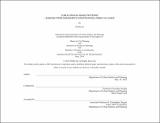| dc.contributor.advisor | Eran Ben-Joseph. | en_US |
| dc.contributor.author | Hu, Phillip (Philip H.) | en_US |
| dc.contributor.other | Massachusetts Institute of Technology. Department of Architecture. | en_US |
| dc.coverage.spatial | a-cc--- | en_US |
| dc.date.accessioned | 2016-10-25T19:17:26Z | |
| dc.date.available | 2016-10-25T19:17:26Z | |
| dc.date.copyright | 2016 | en_US |
| dc.date.issued | 2016 | en_US |
| dc.identifier.uri | http://hdl.handle.net/1721.1/104990 | |
| dc.description | Thesis: M.C.P., Massachusetts Institute of Technology, Department of Urban Studies and Planning, 2016. | en_US |
| dc.description | Thesis: S.B. in Planning, Massachusetts Institute of Technology, Department of Urban Studies and Planning, 2016. | en_US |
| dc.description | Thesis: S.B., Massachusetts Institute of Technology, Department of Architecture, 2016. | en_US |
| dc.description | This electronic version was submitted by the student author. The certified thesis is available in the Institute Archives and Special Collections. | en_US |
| dc.description | Cataloged from student-submitted PDF version of thesis. | en_US |
| dc.description | Includes bibliographical references (pages 119-121). | en_US |
| dc.description.abstract | Shenzhen's villages in the city or urban villages are forms of informal settlement that emerged in the midst of rapid Chinese urbanization. For a period of time, both the city and villages mutually benefited from the arrangement where rural-designated urban villages used their unrestricted developmental rights to create an alternative affordable housing option for low cost workers. Recently, as land prices have increased, city leaders and developers have begun redeveloping urban villages as a new source of land supply. Even when the original village cooperative, now corporation, is well compensated, migrant workers must continuously move further away from the city to find affordable housing. The cost of erasing urban village cannot only be measured by figures of relocation costs, rental prices, and potential profits. This thesis acknowledges the value of urban villages as a community and place through its dynamic public realm. The unplanned activities and street life in the village's alleys and niches include many social and recreational uses alongside necessary economic and domestic uses. The urban village becomes a potential model for a responsive, never-obsolete, flexible structure that allows for a pluralistic approach to understanding cities. The thesis looks at the how both informal and formal spaces in the public realm are used and asks: How are informal and formal spaces used differently? How does public life in a flexible, adaptable public realm preserve affordability and community in urban villages? How does informal public life challenge conventional understandings of the role of public space? Through design, how can the lessons from these spaces be translated in contemporary developments to foster community and public life? The thesis begins with an overview of existing public realm design recommendations with regards to unplanned activities. A field study in January 2016 provides the primary research data, including observations, time-lapse photography, and informal conversations with public realm users and planning-related professionals. The thesis follows with a mapping and analysis process of building elements, adaptations, and activities that reveals how physical typological elements affect usage pattern. The thesis concludes with design recommendations and possible design interventions that reflect the continuing relevance of urban villages. | en_US |
| dc.description.statementofresponsibility | by Phillip Hu. | en_US |
| dc.format.extent | 121 pages | en_US |
| dc.language.iso | eng | en_US |
| dc.publisher | Massachusetts Institute of Technology | en_US |
| dc.rights | M.I.T. theses are protected by copyright. They may be viewed from this source for any purpose, but reproduction or distribution in any format is prohibited without written permission. See provided URL for inquiries about permission. | en_US |
| dc.rights.uri | http://dspace.mit.edu/handle/1721.1/7582 | en_US |
| dc.subject | Urban Studies and Planning. | en_US |
| dc.subject | Architecture. | en_US |
| dc.title | Public realm usage patterns : lessons from Shenzhen's disappearing urban villages | en_US |
| dc.type | Thesis | en_US |
| dc.description.degree | M.C.P. | en_US |
| dc.description.degree | S.B. in Planning | en_US |
| dc.description.degree | S.B. | en_US |
| dc.contributor.department | Massachusetts Institute of Technology. Department of Architecture | |
| dc.contributor.department | Massachusetts Institute of Technology. Department of Urban Studies and Planning | |
| dc.identifier.oclc | 960043390 | en_US |
